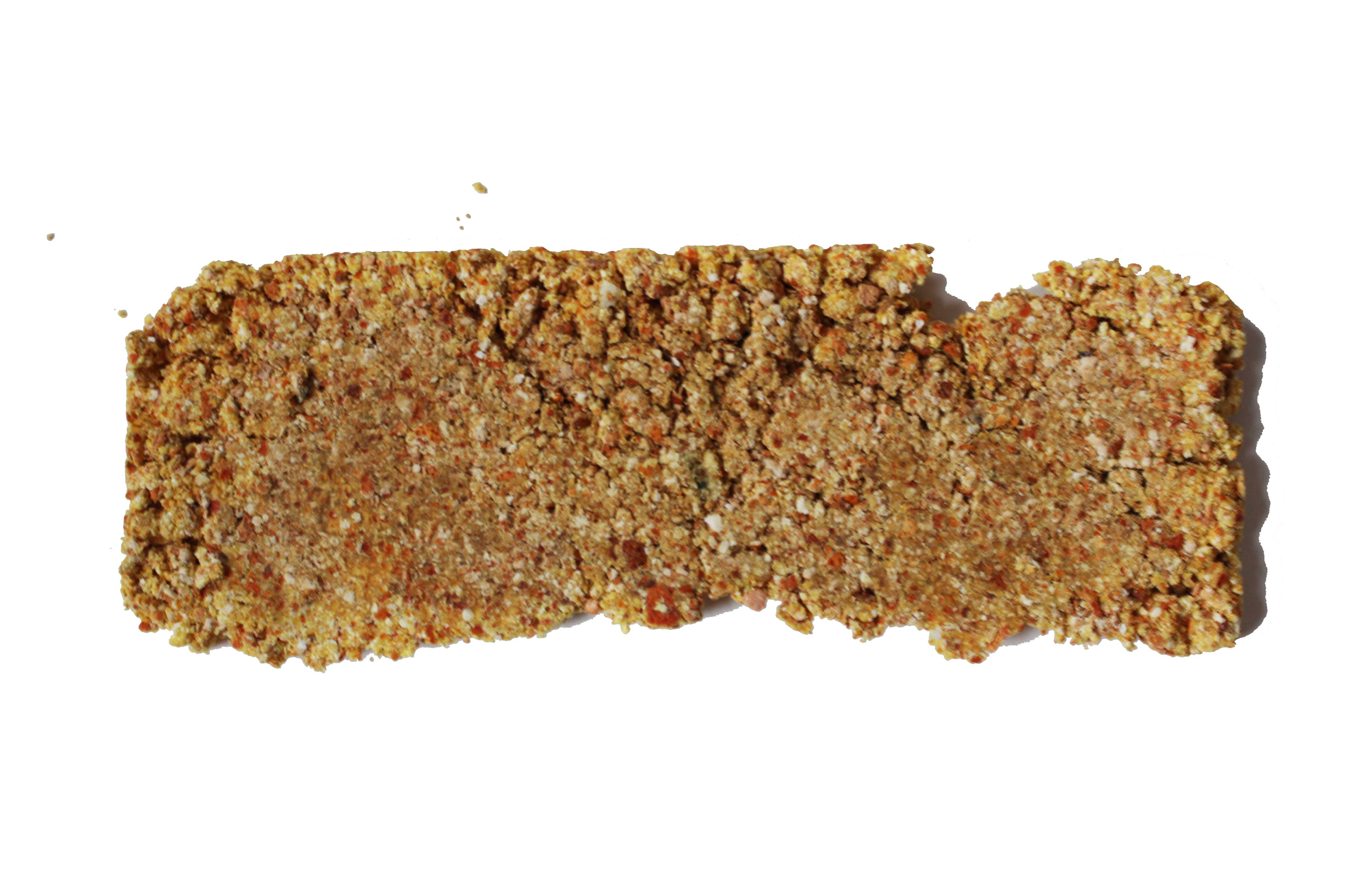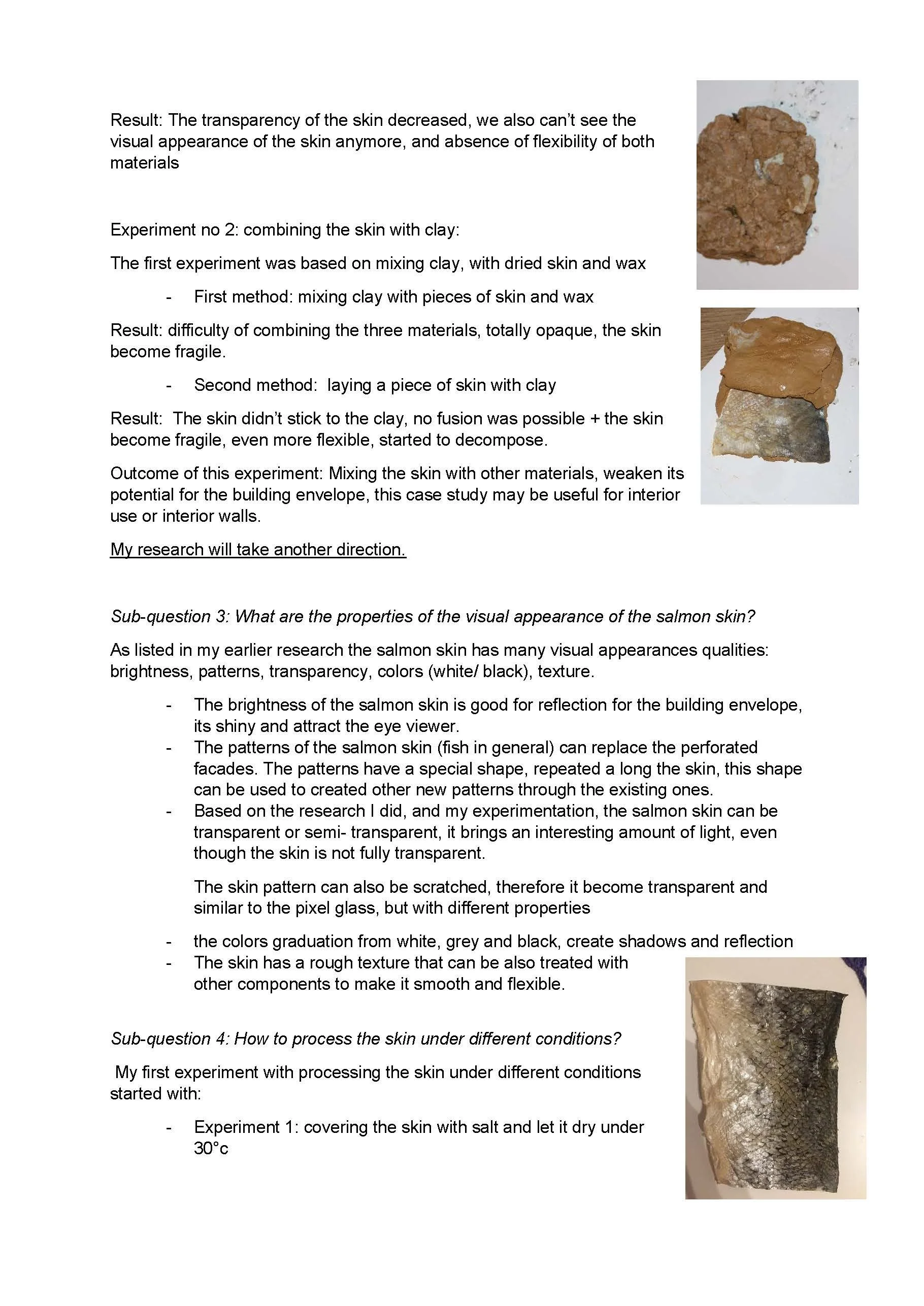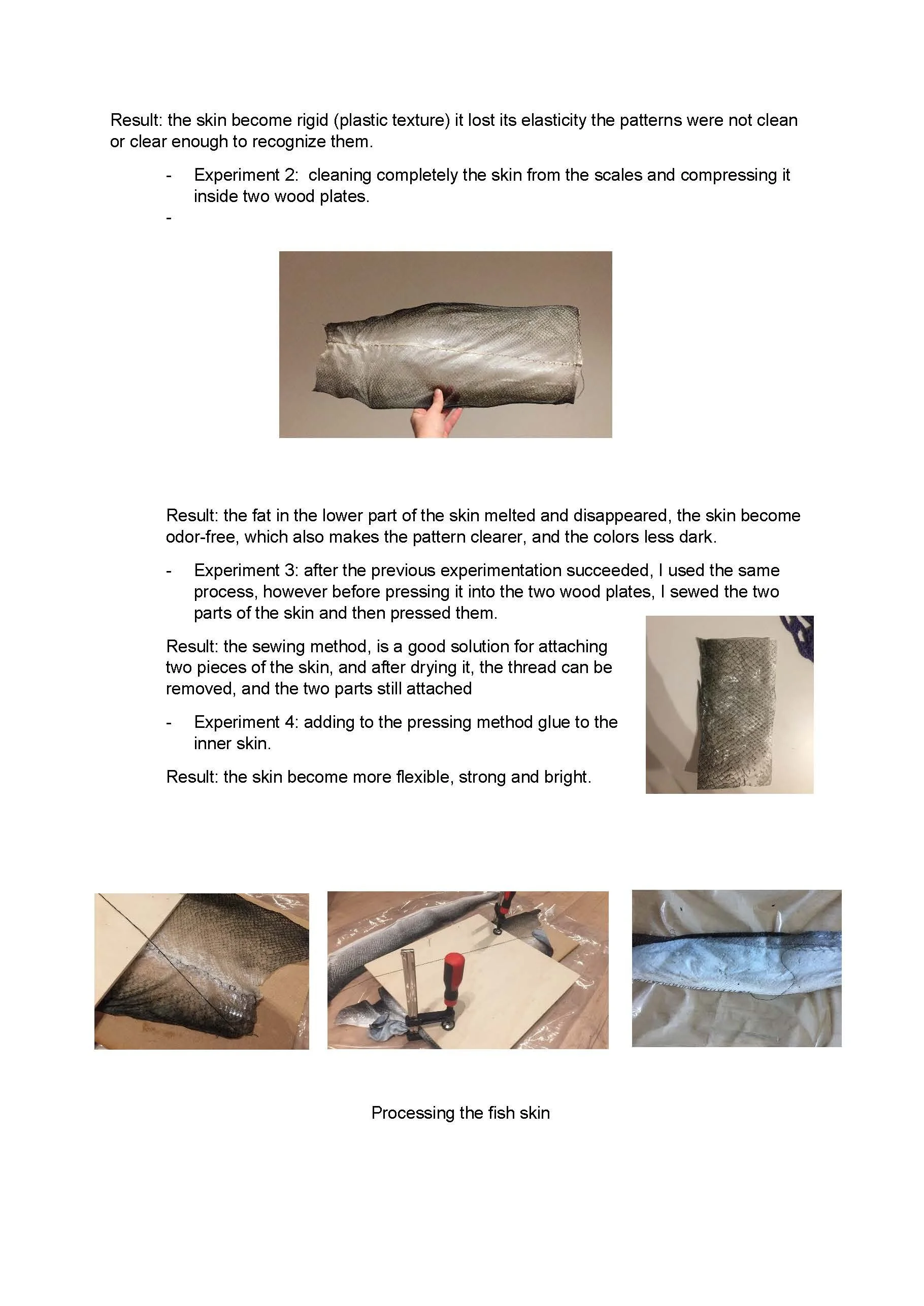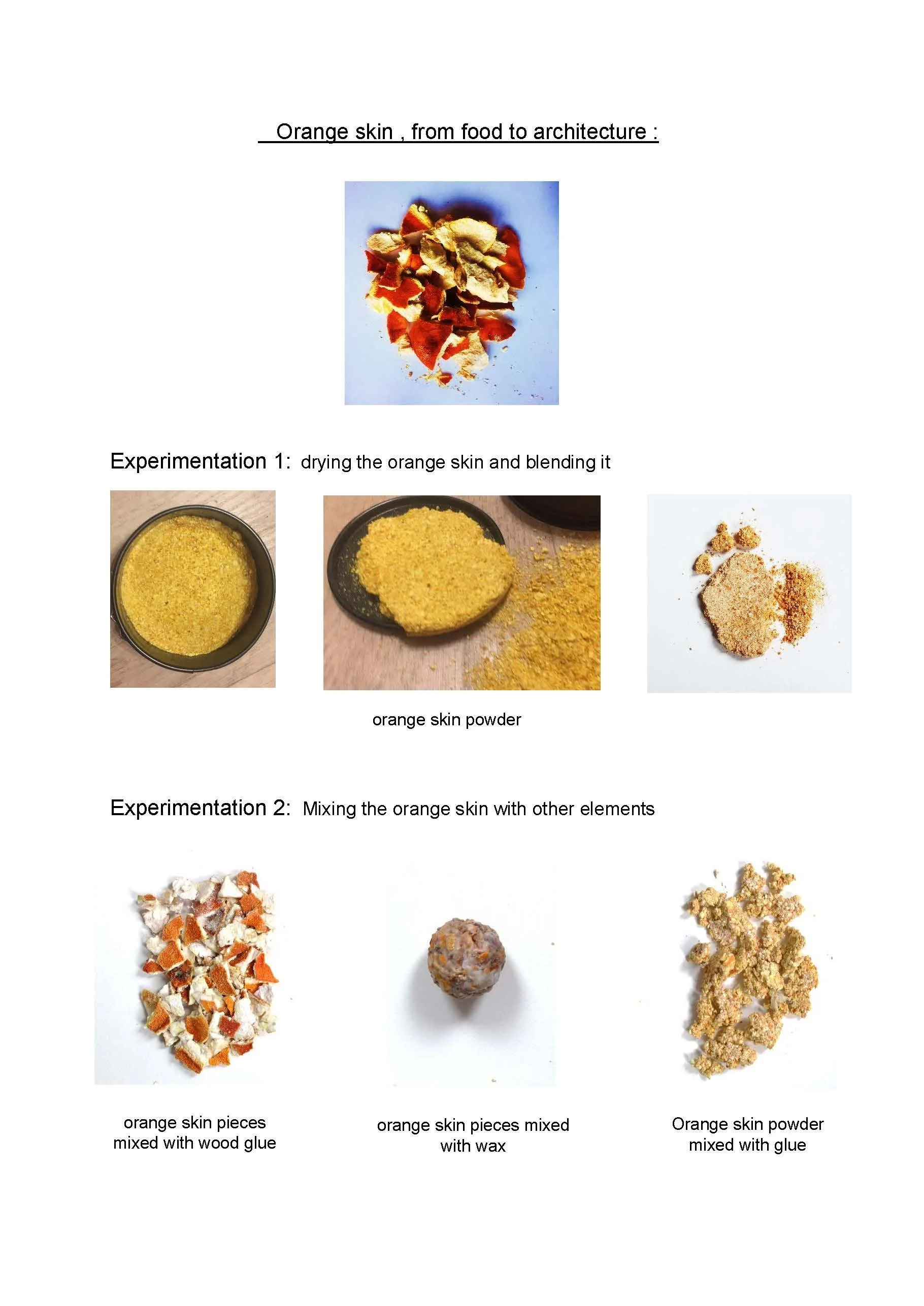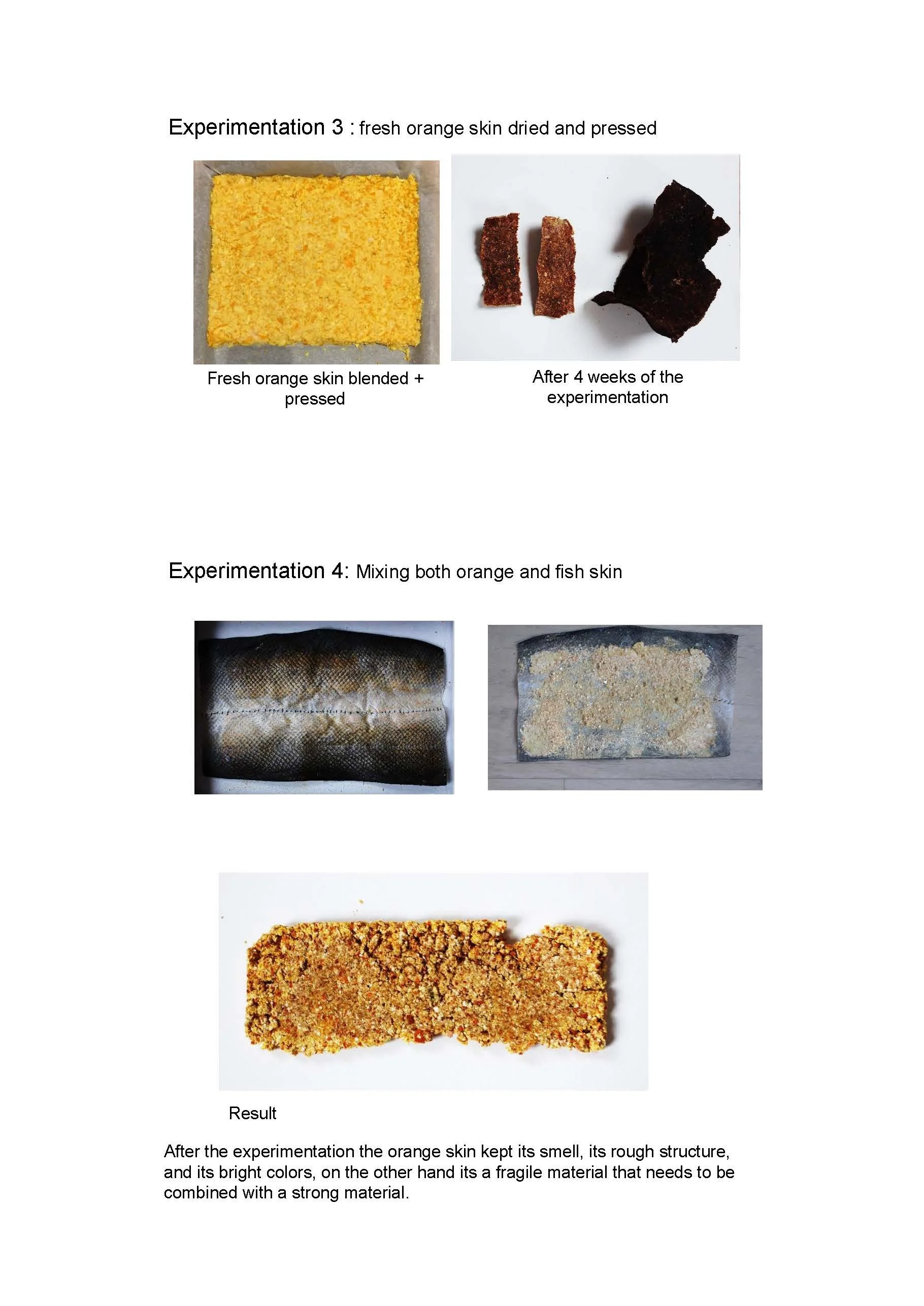The reproducible ‘off-the-grid’ living unit is designed for a suburban area in The Hague for two persons You will minimize the use of materials, space, and environmental footprint while maximizing the quality of life.
The idea is to work with two natural products( fish skin, orange peel), create a sustainable material out of them that will eventually be used as a building material for the tiny house made out of the bamboo structure.
The idea of the tiny house is a semi-mobile house, where part of the house can be left on the site and the other part can be taken when they are away for an adventure.
The house consists of two curved shapes attached to a cube, each curve represents the private space of the couple, and the cubical space represents the sharing space in a sphere shape, for sleeping, attached to a rectangular shape that contains the wet facilities ( sink, bath, toilet).
Research 01:
The research class in relation to the design studio is based on coming up with a sustainable material, through experimentation, desk research, and references, which will help us to treat the material under different conditions, to end up with a satisfying result of a product that can be used in construction.
Starting from the intuitive selection of materials, I set my choice on working with the fish skin, an organic material that has been used for decades as leather for clothing, bags, and shoes, which is processed under different conditions, that may take weeks to be finished. due to its visual appearance (colors, transparency, patterns, brightness), elasticity, flexibility, and waterproofing features, this material may have good use in the construction and architecture field, and since there is no database about it in the field mentioned earlier, I will make use of the database I found about it in the field of textile and leather use.
Therefore I want to do my research about this material and find a way to make a benefit out of it for buildings, especially building envelopes and interior design ( e.g: bathroom, kitchen).
Since we have a wide range of skin fish, I will focus on Salmon skin, it’s widely available and has a large skin surface, which makes it handy for experimentation.
Through my reading of the properties of this material, I find out that the skin is not strong enough to be used as the main structure therefore I want to do experimentation, by combining it with other materials, that can add, and complete the properties of the fish skin, thus I want to come up with a material that can be used for the building envelope based on highlighting the skin appearance properties.
Main question:
How the salmon skin can be used as a material for building envelopes?
Aim:
- To explore the different possibilities of using the salmon skin as a material for the façade.
- To emphasize the visual appearance of the salmon skin.
Objective:
- In order to explore the different possibilities of using the salmon skin as a material for the building envelope I will experiment it with other materials.
- In order to emphasize the visual appearance of the salmon fish I will process the skin under different conditions to see the skin reaction to each experimentation.
Sub-question 1:
- what material can be combined with the salmon skin?
Aim:
- To find the suitable material that can support the weakness of the salmon skin
Objective:
- In order to find a suitable material that can support the weakness of the salmon skin, I will research materials that have a common/ similar property to the salmon skin
Method: Compare and experiment
Sub-question 2:
- How to combine the materials and the salmon skin?
Aim:
- To know the techniques of combining the materials with salmon skin.
Objective:
- In order to come up with a proper material based on the salmon skin for the building envelope, I will make different experiments by mixing the salmon skin with wax and clay.
Method: Experimentation
Sub-question 3:
- What are the properties of the visual appearance of the salmon skin?
Aim:
- To understand the most important properties of salmon skin.
Objective:
- In order to focus on the most important properties of the salmon skin I will do research about every property to choose the right one for the building envelope.
Method: Desk research and experimentation
Sub-question 4:
- How to process the skin under different conditions?
Aim:
- To find the right process for treating the salmon skin
Objective:
In order to find the right process for treating the salmon skin I will experiment with the skin by drying it, sewing, etc.
Method: Experimentation
Literature resource:
Fish Skin: From Clothing to Tissue Engineering - Hermann Ehrlich
Fish in Research - Otto W. Neuhaus and John E. Halver
The outcome of each sub-question:
Sub-question 1: what material can be combined with the salmon skin?
Sub-question 2: How to combine these materials with the salmon skin?
I set my choice for Clay and wax, below I made a table of how similarities and complementarities of the salmon skin with wax and clay.



